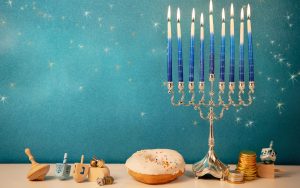Orange on the Seder Plate
Given that it’s an ever-evolving tradition, it’s no surprise that some Jewish families today have added new Seder plate items beyond the classic six foods we’ve known for generations.
And the most famous and now decades-old “new” addition to the Passover Seder is: the orange!
Some families give it its own spot on the Seder plate itself, while others add it on the side or elsewhere on the holiday table.

Origins & Meaning
The tradition of the orange is attributed to Susannah Heschel, a professor of Jewish studies at Dartmouth College. She started including an orange in her Passover Seder in the 1980s in recognition of gay and lesbian Jews and others who are marginalized in the Jewish community. More than just placing it on the Seder plate, she invented a ritual as part of the Seder itself in which each person takes a segment of the orange, says the blessing for eating fruit over it, and eats it while spitting out the seeds to symbolize a rejection of homophobia.
This ritual spread initially through lesbian Jewish circles and from there among other feminist Jewish groups throughout the 1980s and 90s. It ended up acquiring a feminist meaning as well, as non-LGBTQ women who also felt marginalized by traditional Judaism saw the orange as a symbol of women and women’s place in Jewish life.
A legend arose that says the orange came about because Heschel was told by a male rabbi that a woman belongs on the bimah (the platform in synagogue from which services are led and the Torah is read) like an orange belongs on a Seder plate. It appears this story has been made up, but it spoke the truth of how many women have felt rejected by Jewish male leadership and wanted to assert their place.
Today some people see the orange as a feminist emblem, others as a symbol of LGBTQ solidarity and inclusion, and some combine the two themes or have it represent marginalized communities in general.
Not everyone does the ritual of eating the orange and spitting out the seeds during the Passover Seder; many simply place it on the Seder plate and reflect on the themes behind it. And some who are more traditional may be uncomfortable with adding it to the Seder plate itself but place it as a modern addition next to the plate.
Whatever your own family tradition, it’s worthwhile to take a moment to remember our most marginalized members this Passover!
Do you have everything you need for Passover? Shop our exclusive Passover Judaica and gifts straight from the Land of Israel, including beautiful Seder plates, fun decor and clothing, and even gifts made just for kids!
And check out the top Passover 2023 gifts and our Seder essentials guide for the best items that’ll wow your family and guests.
Make your loved ones’ holiday amazing with our guide to the best Passover gifts from Israel’s top artists!


















